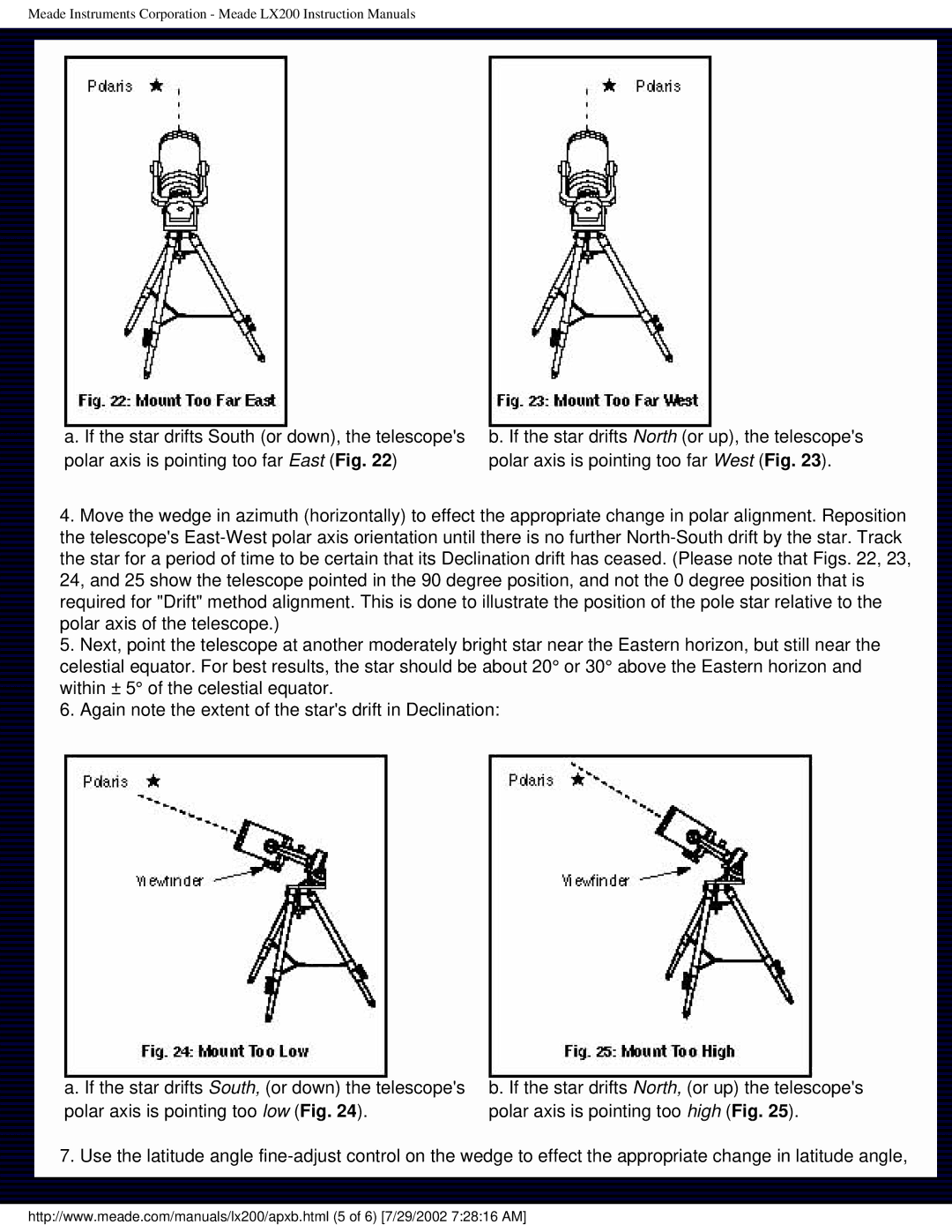
Meade Instruments Corporation - Meade LX200 Instruction Manuals
a. If the star drifts South (or down), the telescope's | b. If the star drifts North (or up), the telescope's |
polar axis is pointing too far East (Fig. 22) | polar axis is pointing too far West (Fig. 23). |
4.Move the wedge in azimuth (horizontally) to effect the appropriate change in polar alignment. Reposition the telescope's
5.Next, point the telescope at another moderately bright star near the Eastern horizon, but still near the celestial equator. For best results, the star should be about 20° or 30° above the Eastern horizon and within ± 5° of the celestial equator.
6.Again note the extent of the star's drift in Declination:
a. If the star drifts South, (or down) the telescope's | b. If the star drifts North, (or up) the telescope's |
polar axis is pointing too low (Fig. 24). | polar axis is pointing too high (Fig. 25). |
7. Use the latitude angle
http://www.meade.com/manuals/lx200/apxb.html (5 of 6) [7/29/2002 7:28:16 AM]
